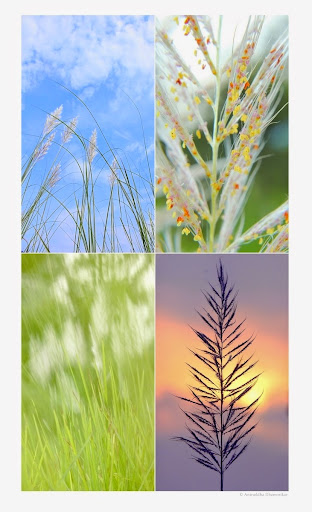Barefoot Notes: Kaans
Such fairness have
I ever seen,
On tender stilts
and blades like steel
Of greens and
yellows, of red-tipped reeds
Standing boldly in
rain, gently swaying in breeze.
What name do they
call you,
Whose song do you sing,
Do you speak of the
aging seasons,
Have you a message
in your wisps woven?
“They call me
Kaans, or Kansh, and Kasha
I sing of the clouds
that retreat beyond
And I speak of the
sun, glaring over the plains
And I rise to bid
farewell to the last shimmer of rains.”
Kaans (Saccharum spontaneum) is probably the most beautiful grass of central India. One can see fields of their fair-spikelet swaying in the cool monsoon breeze in meadows and paddy fields, as if someone planted them there to adorn the green monochromes of rice.
Their blooming is said to indicate that the end of monsoon
is near. By the beginning of September, their fair-heads will loosen, and soon
after fertilization, their seeds, one by one, will single out and fly aimlessly,
guided by the wind, to find another place to settle in.
 |
| The flower-heads of Kaans fly through the air as the season ages, dispersing seeds and claiming new territories |
 |
| Kaans is a symbolic way of nature to express the end of a season |
 |
| August has seen longer hot days and shorter intense showers, putting crops at risk of drought and disease |
 |
| Play of sun-and-rain were also a frequent norm of monsoon this August, something witnessed only during the retreating season of September-end |
Only the end of monsoon will make the picture clear, but
Kaans has already hinted at what’s to come.

Is the poem written by you?
ReplyDeleteYes sir, very much so.
Delete